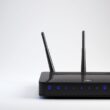So, you’ve reached a stage where you want to know “how to fix a Mac with a question mark folder.” Do you have any idea why this is taking place? Allow us to clarify. Whenever you try to launch your computer and fail to detect a starting disk, the flashing folder with a question mark will appear.
You might find it hard to deal with this. But the good news is that there are many quick and easy ways that you can quickly solve this problem. We’ll show you how to resolve a flashing folder with a question mark on your Mac in this article, step by step, by using the most effective solutions available.
So, what exactly is a Mac flashing question mark folder?
Before discussing the methods for the issue “how to fix Mac with a question mark folder,” let’s get to know the error a bit better. The Apple logo is not shown when you first turn on your Mac. Instead, the screen displays a mac with a flashing folder question mark in the center.
The Apple logo is not shown when you first turn on your Mac. Instead, the screen displays a mac with a flashing folder question mark in the center. When the question mark folder appears on a pre-2015 Mac, you may hear a chime before you see it. All Apple Mac computer devices, including the iMac, Mac Mini, MacBook, MacBook Pro, MacBook Air, and Mac Pro, are powered by the same operating system (macOS.) Therefore, the Mac folder question mark problems are possible across all of the company’s Mac computer products.
In layman’s terms, the Mac question mark folder signifies that:
- You have a problem with your startup hard drive or logic board (problems with the hardware.)
- The startup disk has software-related concerns since it does not include a working copy of macOS.
How to Fix a Mac with a Question Mark Folder: Easy and Effective Solutions
1. Perform a Force Shut Down procedure
Performing a force shutdown of your Mac and then rebooting your system if you cannot progress beyond the flashing folder with a question mark screen. This is the first method to try. Here’s what you have to do:
- Be sure to remove your MacBook’s charging cable before continuing.
- Hold down the power button until the screen turns completely black.
- Take your time—up to ten seconds is recommended.
- To complete the fix, press the power button to boot the laptop.
Now you can check to see if the problem has been resolved or not. If not, move to the second method.
2. Perform a diagnostic test in Recovery Mode
The Disk Utility, a built-in Mac tool, may be used to diagnose and attempt to solve the problem by loading your laptop into recovery mode and running it. Here’s how you can go about it:
- Press and hold the power button until your laptop shuts down while your screen is frozen in the question mark folder. After that, restart your Mac and hit and hold the Command + R keyboard shortcuts for several seconds. This should put your Mac in recovery mode.
- In the pop-up box that appears on your screen, click Disk Utility. Select First Aid from the app’s menu.
- Select your starting disk from the pop-up box that appears and launch First Aid to check whether the app can detect and fix any damage.
- Even if Disk Utility is unsuccessful in identifying and correcting the fault causing your initial disk error, you may take a few further measures. You may attempt to format your starting drive, reinstall Mac OS, or restore your disk using Time Machine. The data on your drive will be erased when you format and reinstall the operating system, and Time Machine will restore your Mac to a previously recorded image. So, you must proceed with care.
Taking your startup disk to a repair shop is the only option if Disk Utility doesn’t recognize it.
3. Disconnecting the network cables as well as the peripheral devices from the laptop
- Shut down your system. Hold down the power button on your MAC system for a few seconds until it shuts down if you cannot shut down your computer the conventional way.
- Unplug all of the devices connected to the laptop. And these may include all the printers, external hard drives, and Ethernet connections.
Restart your MAC system now and check if the issue is resolved.
4. Boot the MacBook using the Startup Manager
If you’re booting macOS from the internal disk, check the Startup Manager to see if it’s causing a question mark folder to appear. Follow these steps:
- Power off the MacBook in the same manner as you usually do.
- After that, keep holding down the Alt or Option key until the Apple logo appears.
- A prompt from the MacBook Startup Manager should appear. To get started, choose the Start Disk. To navigate, use the left-right arrows, and to choose, use the Return key.
- Restarting the Mac in this manner removes the question mark folder, thus solving the issue.
5. Reinstalling Mac OS X to resolve the Mac’s Flashing Question Mark Folder issue
A reinstall of macOS may also fix the folder with a question mark at the startup of a MacBook laptop. Here are some simple actions you may take to see if you can make it work:
- Go to macOS Utilities and touch “Reinstall macOS” if you’re in recovery mode.
- Choose the Macintosh HD by pressing the Continue button.
- Make a backup of your data and then wipe the hard drive of your Macintosh. Follow the on-screen directions to reinstall the macOS operating system.
- The Mac immediately reboots and begins booting from a bootable startup disk when the installation procedure is complete.
- Transfer your data from a source disk to the internal drive of the Mac using the Setup Assistant.
Please keep in mind that if the Disk Utility does not recognize or repair the starting disk, the storage media is experiencing hardware troubles. To resolve this issue, contact your local repair service provider.
6. Reset the non-volatile RAM (NVRAM)
Follow the below steps to rest non-volatile RAM.
- Your Mac will need to be shut down and restarted.
- For the next 30 seconds, hold down the Option, Command, P, and R buttons simultaneously.
- Your Mac will reboot automatically during this time. Release these keys when your Mac shows the Apple logo or plays the startup sound on the second consecutive reboot.
- The appearance, sound, and date/time settings of your Mac may have changed after you start it up. The best screen resolution, date and time, and volume may be customized similarly to before.
If your firmware is password-protected, it is possible that using the Option + Command + P + R key combinations will not function. In such a circumstance, you will first need to deactivate the firmware protection function, which may be accomplished by following these steps:
- Restart your Mac.
- Press and hold the Command and R keys simultaneously for a few seconds.
- When you see a lock symbol appear on your screen, you may let go of the keys.
- To log in, you must enter your firmware password.
- The Firmware Password Utility may be found under the utility menu.
- Click “Turn Off Firmware Password,” which will require you to enter your firmware password. Enter your password.
- To restart your Mac once again, go to the Apple menu and pick Restart from the menu that appears.
7. Choose the correct disk when you start
If none of those mentioned above techniques work, try selecting the correct starting disk by visiting the Startup Options page while your Mac is booting up. The process varies depending on whether the computer is an Intel or an Apple Silicon Mac.
Follow these steps if you’re using an Intel-based Mac:
- To shut down the laptop, press and hold the power button for a few seconds.
- Next, to turn it on again, press and hold the power button for a second time, then press and hold the option key. Let go of the option when you get to a screen that shows the startup disks.
- Select the correct boot disk and click the Continue button with the arrow.
Follow these procedures if you’re using an Apple silicon Mac:
- Hold the power button to turn off your Mac.
- Now, you must press and hold the power button again for another few seconds. Continue to hold down the button until you reach the Startup Options page.
- Select the correct starting disk from the drop-down menu and press Continue.
Wrapping Up
You may have faulty or malfunctioning internal storage if your device keeps getting frozen at the folder with a question mark screen or if you have difficulty executing any of the remedies above. It is recommended that you schedule an appointment at your local Apple Store and have an Apple Genius examine your device in this case. But the remedies explained are most likely to fix the issue for most users experiencing the problem.




